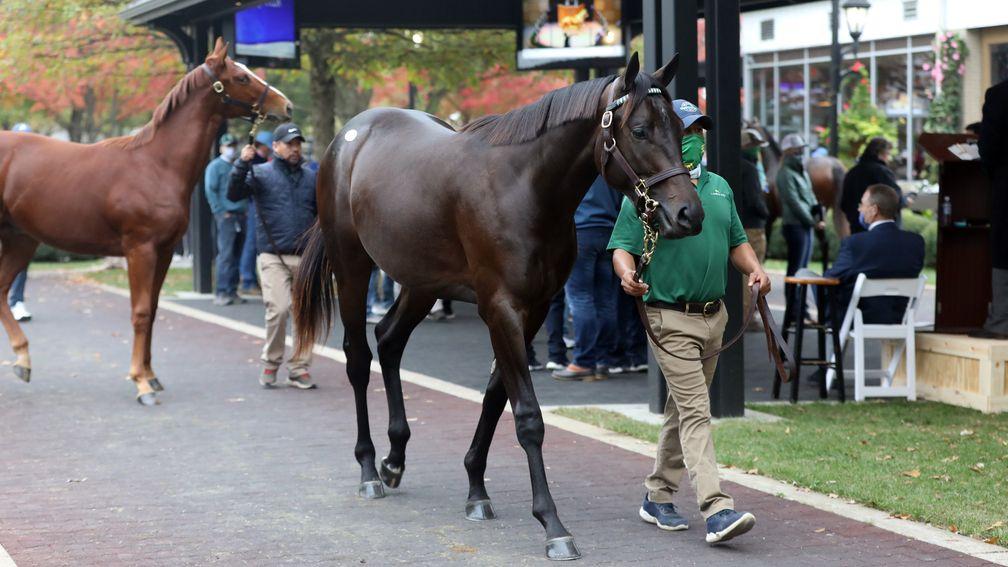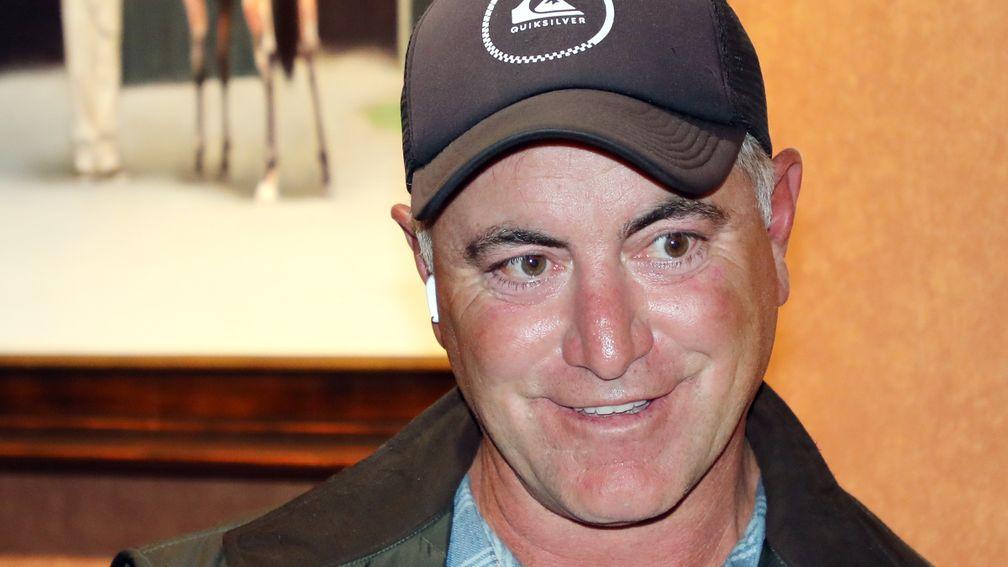Uncle Mo Colt tops solid action at Fasig-Tipton October Sale
Final yearling sale of the year concludes on Thursday.

A son of Uncle Mo became the new sale topper during the penultimate session of the Fasig-Tipton Kentucky October Yearlings Sale on Wednesday, going to the account of Karl and Cathi Glassman for $600,000.
Consigned by Lane's End, the colt bred in Kentucky by Kinsman Farm had been a $325,000 buyback at last month's Keeneland September Yearling Sale. Produced from the winning A.P. Indy mare A. P. Dream, the colt is a half brother to stakes winner and multiple group-placed Wind Fire.
The colt's second dam is multiple Grade 1-winning millionaire Dream Supreme, whose 10 winners include Grade 1 winner and sire Majestic Warrior.
Agent Donato Lanni, who represented the Glassmans in the purchase, said the colt's attributes were obvious.

The Uncle Mo colt highlighted another day of solid trade as the final yearling auction of the year neared the wire with numbers that showed little effect from the pandemic.
The vibrant and competitive market belied the reality that the sale is taking place during Covid-19, and save for the extensive novel coronavirus health and safety measures in place, there was little to separate this year's October sale with previous years.
Fasig-Tipton reported 237 yearlings sold for gross receipts of $9,062,300, an average price of $38,238, and a $17,000 median. The 74 horses that went unsold represented an RNA rate of 24 per cent. During the third day a year ago, 240 head grossed $8,378,100, averaging $34,909 with a $10,000 median price. The RNA rate was 26 per cent.
From 1,164 yearlings cataloged heading into the final session, 726 yearlings have grossed $25,452,800, averaging $35,059 with a $15,000 median and 22 per cent RNA rate. Through the first three days in 2019, 740 horses averaged $37,266 from aggregate receipts of $27,577,200, with a $13,000 median and 26 per cent RNA rate.
"It's always fun to sell some expensive horses and some top-quality horses, and we were fortunate enough to have several in our catalog today," Fasig-Tipton president Boyd Browning Jr said. "Overall, trade continue to be good at pretty much all levels, and the RNA rate was down this year compared with last year."
Browning said the October sale numbers should bode well for the confidence level within the breeding and sales industries, with solid trade taking place in uncertain times.
"It is encouraging to see," Browning said. "My fear when we came into this sale was that the bottom end of the market might be decimated, particularly with some travel restrictions in place for a lot of our friends from South America, and we've got virtually no Canadian participation because of the travel restrictions.
"Nobody wants to talk about the lower end of the market, but it has held up really well. It's a fairly consistent marketplace, and, most importantly, a reasonable marketplace does exist for men and women selling horses."
Browning said the October sale, as the final yearling venue, has an important place on the sale calendar.
"I would hope we would have another solid day and be able to put a very positive reflection on the last yearling sale of the year with a significant number of horses," he said. "Both buyers and sellers continue to gain confidence you can bring a horse here and get a fair and marketable price for them. Not one sale fits all.
"There is a time and place where every horse might have his or her best day and it might be in July, it might be in August, or September and it might be in October. I think the more viable sales options that sellers have, the more long-term success they will be able to enjoy the business.
"It gives breeder and sellers a viable option for a later maturing horse or a horse that might have had an issue or a horse that might not have been 'just right,'" Browning said of horses in the October sale that failed to change hands at previous yearling sales this year.
"Sometimes six weeks can make a significant difference for a horse, and it's nice for people to have an option."
The October sale concludes on Thursday.
For more news on US racing, sales and bloodstock news visit bloodhorse.com
Published on 29 October 2020inNews
Last updated 10:42, 29 October 2020
- 'I just loved her' - Familiar dreams but unfamiliar feeling for the vendor of Royal Ascot-bound mare
- Byerley Stud-bred 1,000 Guineas contender Star Style aiming to put best foot forward
- Leo Powell announced as independent chairman of the Bloodstock Industry Forum
- Honeysuckle silks to be displayed at Irish National Stud following six-figure sale at Goffs Punchestown
- Shortlisted nominees announced for the tenth TBA National Hunt Breeders’ Awards
- 'I just loved her' - Familiar dreams but unfamiliar feeling for the vendor of Royal Ascot-bound mare
- Byerley Stud-bred 1,000 Guineas contender Star Style aiming to put best foot forward
- Leo Powell announced as independent chairman of the Bloodstock Industry Forum
- Honeysuckle silks to be displayed at Irish National Stud following six-figure sale at Goffs Punchestown
- Shortlisted nominees announced for the tenth TBA National Hunt Breeders’ Awards